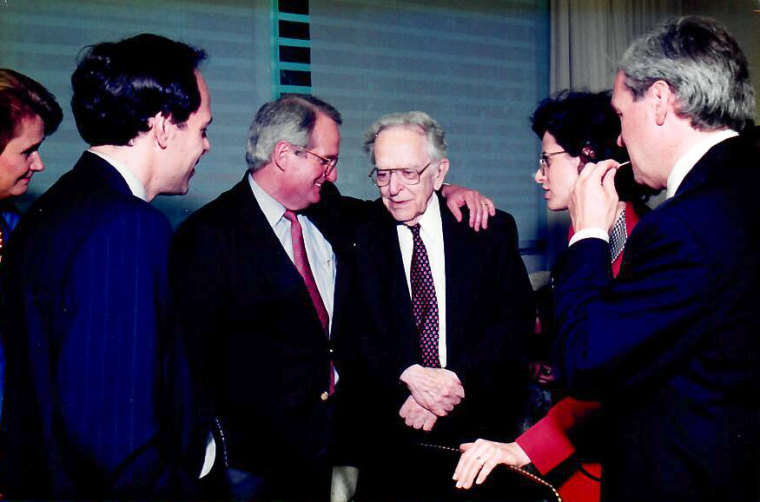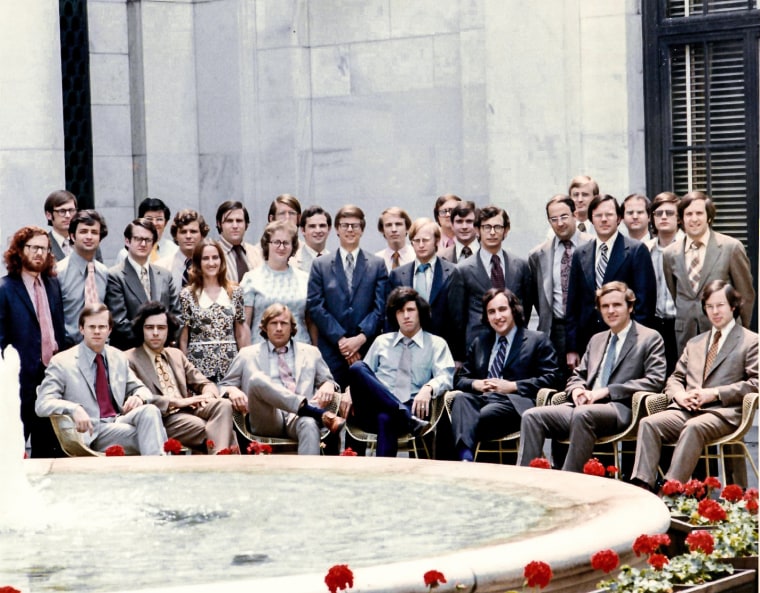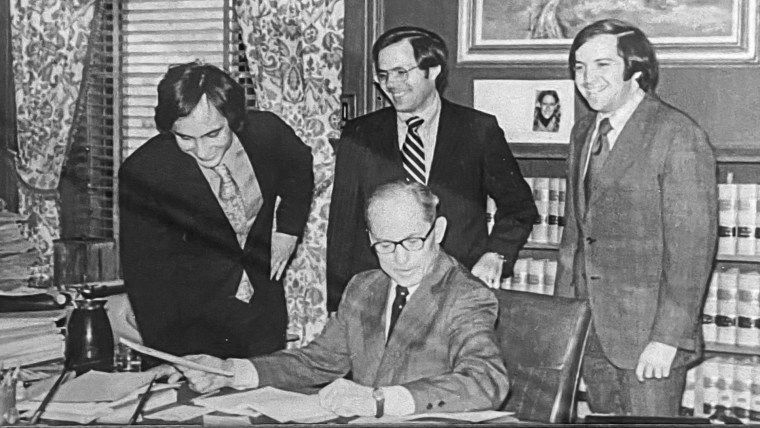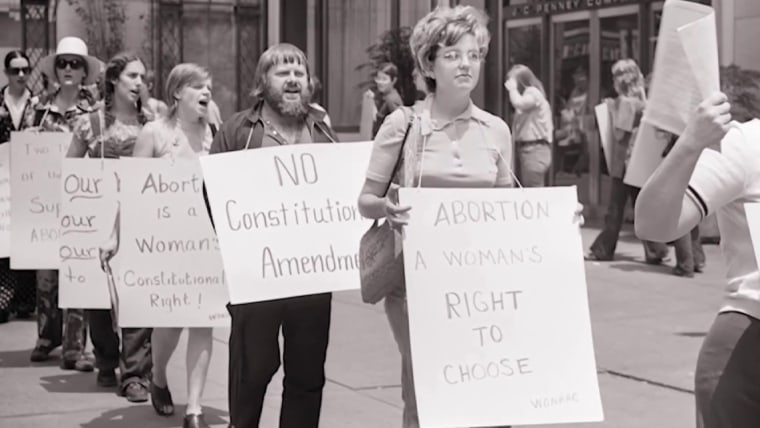[ad_1]
Five decades ago, Jim Ziglar witnessed the landmark Roe v. Wade decision take shape inside the Supreme Court chambers.
“It was so surreal,” he said. “Just incredible.”
In 1972, Ziglar was a recent law school graduate who had landed a one-year clerkship for Justice Harry Blackmun, the eventual author of the landmark decision that legalized abortion nationwide.
In interviews with NBC News, Ziglar, now 77, and four others who clerked for the high court during the 1971-1972 and 1972-1973 terms, when Roe was argued and decided, said they knew the case was significant but could not fathom just how historical and divisive it would become.

“I never dreamed for a moment that 50 years later, Roe would still be so controversial,” said Ziglar, a Washington lawyer who in the span of a long career served as sergeant at arms of the U.S. Senate, assistant secretary of the Interior in the Reagan administration and commissioner of the Immigration and Naturalization Services under President George W. Bush. “And even more importantly, I didn’t realize that abortion was going to be the thing that turned American politics into single-issue politics.”
George Frampton, who clerked for Blackmun a year before Ziglar, described how abortion at the time was viewed as more of a health issue than a women’s issue.
“Most people forget that when these cases came to the Supreme Court, the abortion reform movement, which drove the litigation, was basically a very male establishment, conservative movement driven by the American Bar Association and the American Medical association, not traditionally very progressive or left-wing groups to decriminalize abortion,” Frampton said.
Roe was a ruling that would significantly affect the nation’s women, but when the the case was being decided, there were virtually no women working in the chambers.
John Rich, who clerked for Blackmun during the 1971-1972 session, said “there was only one female clerk” out of about 30 during his year at the Supreme Court, adding that it “struck us as archaic, but it wasn’t surprising at the time.”
In working with Blackmun, Frampton recalled how he would often take notes by phone when the justice would call from Minnesota, where he spent weeks at the Mayo Clinic, his former employer, researching the medical details of abortion. Blackmun, Frampton said, “really wanted to become an expert in the history of abortion and the history of abortion law.”
It was apparent soon after Roe was argued in 1971 that most of the court’s justices, even the conservatives, favored legalizing abortion, Frampton continued. But when then-Chief Justice Warren Burger decided to hold Roe over until the next term — as two outgoing justices were replaced by William Rehnquist and Lewis Powell — many within the court worried that crucial votes might evaporate.
“The law clerks and many of the justices were terribly upset because they thought that the chief justice was trying to turn the case around by getting two new justice nominees from President Nixon, and maybe convincing Justice Blackmun to change his mind,” Frampton said.

“It wasn’t clear that Justice Blackmun and those who wanted to find that there was a constitutional protection of some code for abortion, were going to hang on to a majority.”
Richard Hoffman, who clerked for Justice Byron White during the 1972-1973 term, said the arguments he had in chambers with White in the months leading up to the decision grew heated, as White worked to determine whether it was the court’s place to legalize abortion or if it should be left to the states to decide.
“I actually had a final meeting with him right as he was deciding. And we were screaming at each other. Our voices were raised because of our disagreement, but he encouraged that,” Hoffman said.
To blow off steam in those tense months, White, a former professional football player, encouraged his law clerks to play basketball with him several days a week in a court housed within the Supreme Court building.
“Richard and I would play Justice White in what was called the highest court in the land because it was a basketball court above the Supreme Court’s courtroom,” said Rhesa Barksdale, who clerked for White during the 1972-1973 session.

On Jan. 22, 1973, Roe was decided in a 7-2 vote, with White and Rehnquist dissenting. Barksdale, who described White as a “great and circumspect judge,” said he believes White’s decision to dissent stemmed from his belief in giving the majority a say: “He was a big believer that the court shouldn’t necessarily be deciding what the majority of the people should be deciding, and he expressed that in his dissent.”
An impassioned public response followed the decision, with letters pouring into the Supreme Court by the truckload, some containing death threats.
Half a century later, the Supreme Court voted to overturn its Roe decision in June 2022, when the issue had become one of the nation’s most contentious. In the majority opinion that struck down the constitutional right to the procedure, Justice Samuel Alito wrote that the court’s initial decision in Roe had “sparked a national controversy that has embittered our political culture for a half century.”
While the sitting judges have faced immense backlash from the public for revoking the right, Rich recalled that 50 years ago most of the hate mail had been directed at Blackmun after he wrote Roe’s majority decision. “Bags and bags of mail would come in,” he said.
And for a time, Blackmun “insisted” on reading every letter, Ziglar said. “It had such an unfavorable impact on him. He was beaten up.
“And finally a clerk said, ‘Mr. Justice, you gotta stop reading this stuff.’”
[ad_2]
Source link

